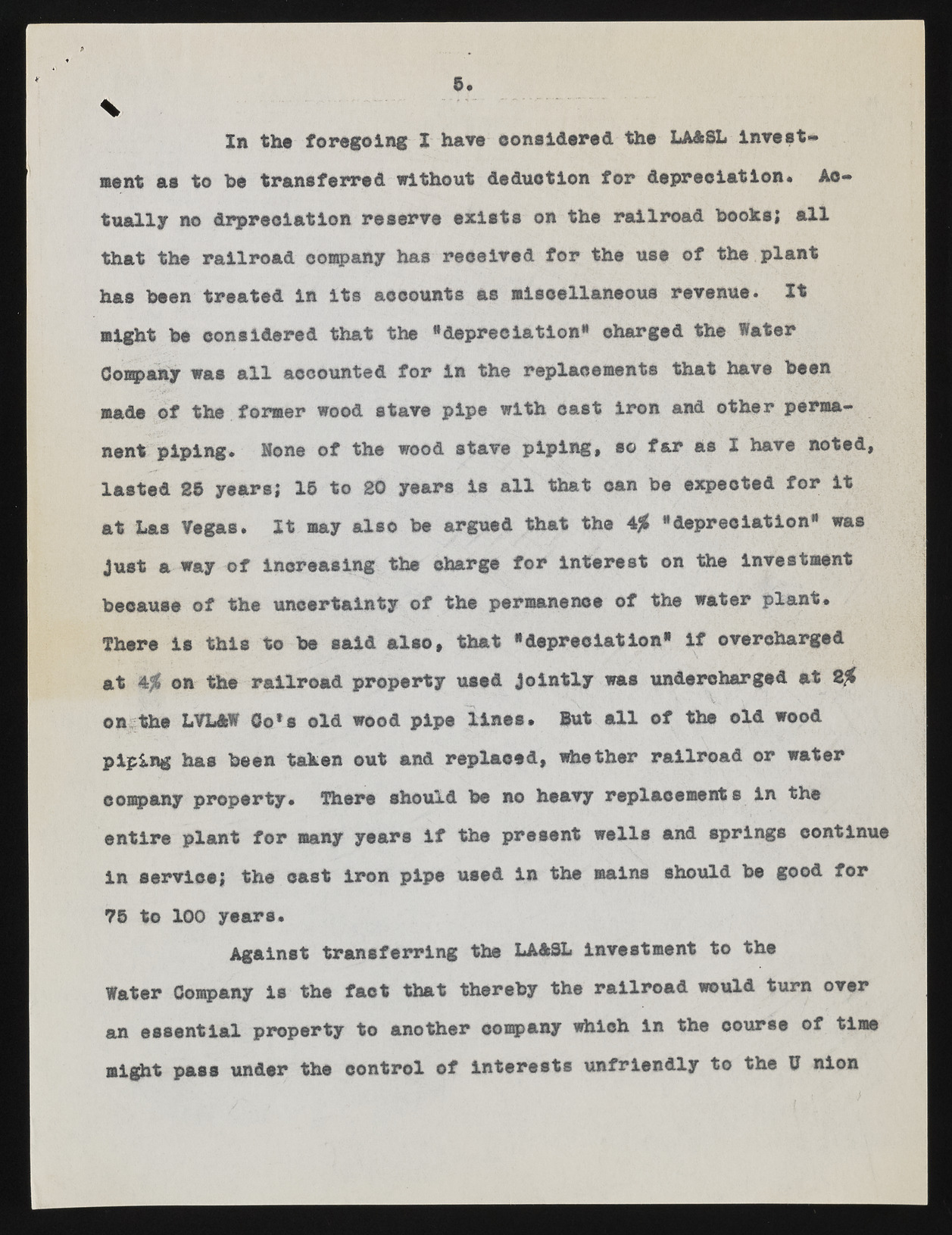Copyright & Fair-use Agreement
UNLV Special Collections provides copies of materials to facilitate private study, scholarship, or research. Material not in the public domain may be used according to fair use of copyrighted materials as defined by copyright law. Please cite us.
Please note that UNLV may not own the copyright to these materials and cannot provide permission to publish or distribute materials when UNLV is not the copyright holder. The user is solely responsible for determining the copyright status of materials and obtaining permission to use material from the copyright holder and for determining whether any permissions relating to any other rights are necessary for the intended use, and for obtaining all required permissions beyond that allowed by fair use.
Read more about our reproduction and use policy.
I agree.Information
Digital ID
Permalink
Details
More Info
Rights
Digital Provenance
Publisher
Transcription
6. In the foregoing X have considered the LA48L invest* ment as to he transferred without deduction for depreciation* Actually no drpreoiation reserve exists on the railroad boohs; all that the railroad company has received for the use of the plant has been treated In its accounts as miscellaneous revenue. It night be considered that the *depreciation* charged the Water CoB$>any was all accounted for in the replacements that have been made of the former wood stave pipe with oast iron and other permanent piping* Hone of the wood stave piping* so far as X have noted, lasted 26 years; 15 to 20 years is all that can be expected for it at Las Vegas. It may also be argued that the 4% "depreciation" was just a way of increasing the charge for interest on the investment because of the uncertainty of the permanence of the water plant. There is this to be said also, that "depreciation" if overcharged at 4% on the railroad property used jointly was undercharged at 2% on the LVLAW Go*s old wood pipe lines. But all of the old wood piping has been taken out and replaced, whether railroad or water company property. There ehould be no heavy replacements in the entire plant for many years if the present wells and springs continue in service; the oast iron pipe used in the mains should be good for 76 to 100 years. Against transferring the LA&3L Investment to the Water Company is the fact that thereby the railroad would turn over an essential property to another company which in the course of time might pass under the control of Interests unfriendly to the U nion V

